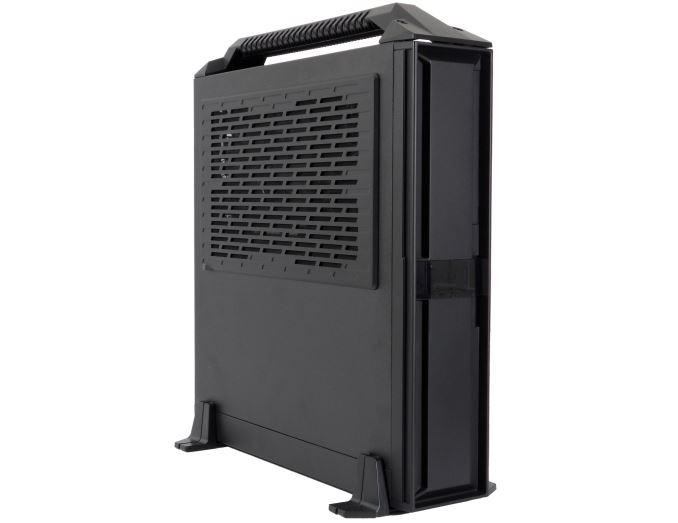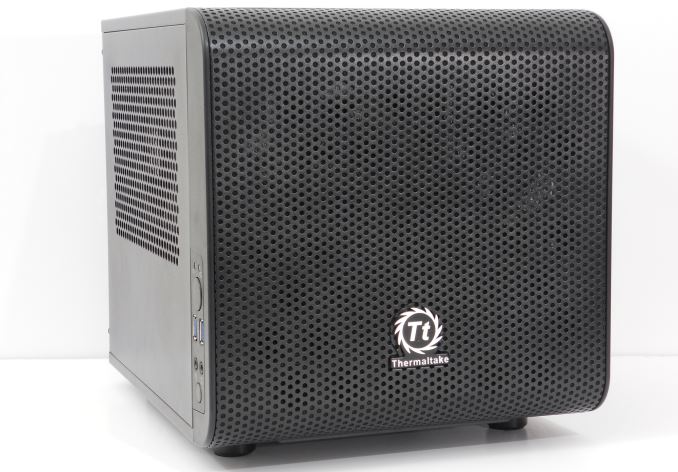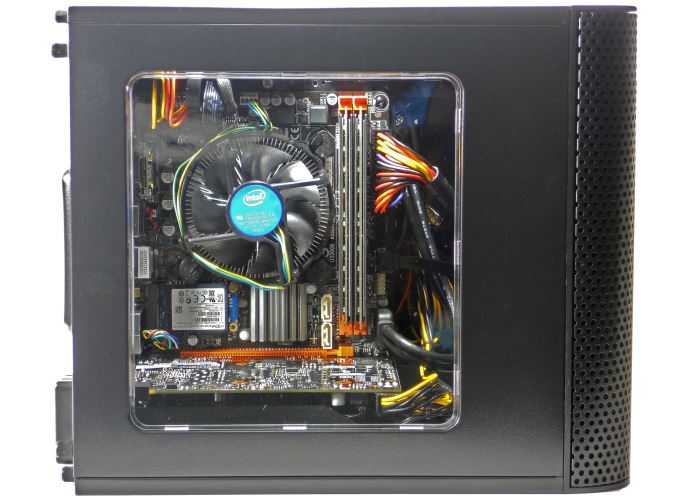Build-A-Rig Round 2, SilverStone vs. Crucial: The $800 PC Showdown
by Daniel Williams on November 12, 2015 8:00 AM EST- Posted in
- Build-A-Rig
- Systems
- Crucial
- SilverStone
Build-A-Rig Round 2: The Conclusion
As we wrap up the second round of the Build-a-Rig contest, both SilverStone and Crucial's back-to-school computers gave us significantly different configurations. With a budget of $800 we have builds that more people may be able to relate to, and with both machines happening to be Mini-ITX builds both are much more portable than a traditional machine which will be much more convenient for the college lifestyle theme that these were designed around.
We got to see from our performance numbers that while SilverStone's Mighty Milo can pull a substantial lead in graphics heavy games, in other cases where the CPU is the bottleneck there’s a definite difference between the Pentium in that system and Cruicial’s choice of a more powerful AVX and Hyper-Threading capable Core i3. That said, thanks to its ability to overclock, Milo can close much of this gap in more lightly threaded or single threaded workloads, falling behind on any remaining HT-sensitive workloads.
On the other hand, Crucial's Ballistix Bantam maintains itself as a more balanced machine and does a better job of keeping its GPU fed and happy. Aside from performance other factors such as a larger Boot SSD and faster WiFi will make the Bantam a nicer machine to use day to day when browsing the web and doing work.
With performance covered we found that the Ballistix Bantam pulled more power thanks to a less-efficient PSU, and that Mighty Milo was quieter at stock thanks to its larger aftermarket CPU cooler. When overclocked Milo does give up that noise advantage though, so as performance equalizes so does noise.
Finally, in the grab bag category we have a lot revolving around the cases themselves. The Mighty Milo uses a fairly narrow case with a handle on top, which is great for actually toting the system around. On the other hand the Ballistix Bantam uses a wider cubic case, but it manages to work in a window so that it can show off just what it’s made of.
And with that, we wrap up the second round of the Build-A-Rig Challenge. The systems have been speced, built, and tested, and now all that remains is for many of you what will be the most fun part of this series, the giveaway. Today is the final day to enter the Build-A-Rig Round 2 giveaway, so be sure to submit your entry before midnight tonight in order to earn a chance to win either Mighty Milo or Ballistix Bantam.
Lastly thanks go out to SilverStone and Crucial for participating in this giveaway and configuring these builds for us. And of course additional thanks go to Newegg for providing parts for these systems.














43 Comments
View All Comments
DanNeely - Thursday, November 12, 2015 - link
At the same time, the efficiency penalty from being significantly below the PSUs sweet spot is much larger than from being near its max output. You're also paying a lot in higher running costs now for that big low efficiency PSU. At typical US energy prices, if you leave it on 24/7 it's about $30/year; and is still $10/year if only on for 8 hours a day (triple these numbers for somewhere like Hawaii or Germany that have really high power costs). A 450/500W model makes a lot more sense now and would do much better in the face of your potential high end upgrade than the current one does now. If you're going with an oversized PSU now because you don't want to buy a bigger one after a future planned upgrade, it really pays to get a high efficiency model to avoid the much higher operational costs when the system is at idle.BrokenCrayons - Thursday, November 12, 2015 - link
The cost concern would vary from place to place, as you've pointed out, but I think the difference in cost even in areas where electrical rates are high aren't that significant. Say you'd spend $90 a year feeding a computer electricity to leave it on 24/7 in a high cost area of the world. A more efficient power supply that burns less power might help, but you'd realize a pretty small overall price difference over the useful lifespan of the computer. I don't deny the idea of a more efficient, lower wattage PSU being a better choice, but I don't think electrical costs are a very significant factor in computing hardware unless the savings are pretty dramatic (say netbook vs gaming desktop) or involve large numbers of computers in a business/enterprise environment.However, I wouldn't even upgrade a system like the Crucial box unless I could do so by waiting a few GPU generations to get more performance for less wattage rather than grabbing a higher end and more demanding current generation part, but I'm also pretty happy with gaming on a GeForce GT 730. If my desktop vanished today, I'm also not against using my admittedly old Atom n270 netbook as my only computer since gaming isn't a major concern. As such, I'm guessing you're more well informed and better suited to make a recommendation. :)
DanNeely - Friday, November 13, 2015 - link
You appear to be misunderstanding my numbers. It's not $90 total, it's $90 *more*. The rule of thumb conversion factor for something on 24/7 is that at a price of 10 cents/KWH is equal to 1 dollar/watt-year. Somewhere that power is 10c/kwh (slightly below the US average) the Might Milo would cost $38/year left at idle, Ballistic Bantam would cost $64; a $26/year difference. At 35c/kwh its $133 vs $224 per year for power, that 26 watt difference ends up costing an extra $91/year.BrokenCrayons - Tuesday, November 17, 2015 - link
Oh, okay! Sorry for the misunderstanding. I do think the cost difference isn't that significant in the grand scheme of things. In the hypothetical college student in a dorm situation, electrical inefficiency isn't going to result in a cost increase unless the university is metering individual dorms. They didn't when I was a student, but that isn't even remotely recent history. For someone who's paying their own electrical bills, $90 a year is only the price of one person's dinner at a nice restaurant. I still agree the power supply is overkill, but energy costs just aren't dramatic enough to matter. Don't buy that extra pair of shoes or skip out on girls/boys night out once or twice -- you won't miss them anyway since you'll be busy playing whatever game it is that makes you happy anyway.nikaldro - Thursday, November 12, 2015 - link
I think you should have tested frame times. 2 vs 4 threads can make a substantial difference sometimes.tipoo - Thursday, November 12, 2015 - link
Yeah, Digital Foundry has pretty much solidified that even two extra virtual threads make a huge difference. 2 cores alone can sometimes drop a lot of frames in a game, two cores with hyperthreading for four virtual threads usually does really well. To the point where the CPU can push over 60fps in games if the GPU is up to it.geniekid - Thursday, November 12, 2015 - link
It's interesting to see how balanced both systems are - they both run into various bottlenecks depending on the application/settings. Objectively, I feel Crucial's more balanced system is the better choice for a true back-to-school system but, subjectively, overclocking SilverStone's G3258 by 34% is much cooler. I'd recommend the former to someone else. I'd take the latter for myself :)Flipper34 - Thursday, November 12, 2015 - link
Not too bad for the price.crimson117 - Thursday, November 12, 2015 - link
Giveaway, shmiveaway! I hope I win.reorx - Thursday, November 12, 2015 - link
This is the perfect PC build for school - especially that Silverstone slim case!